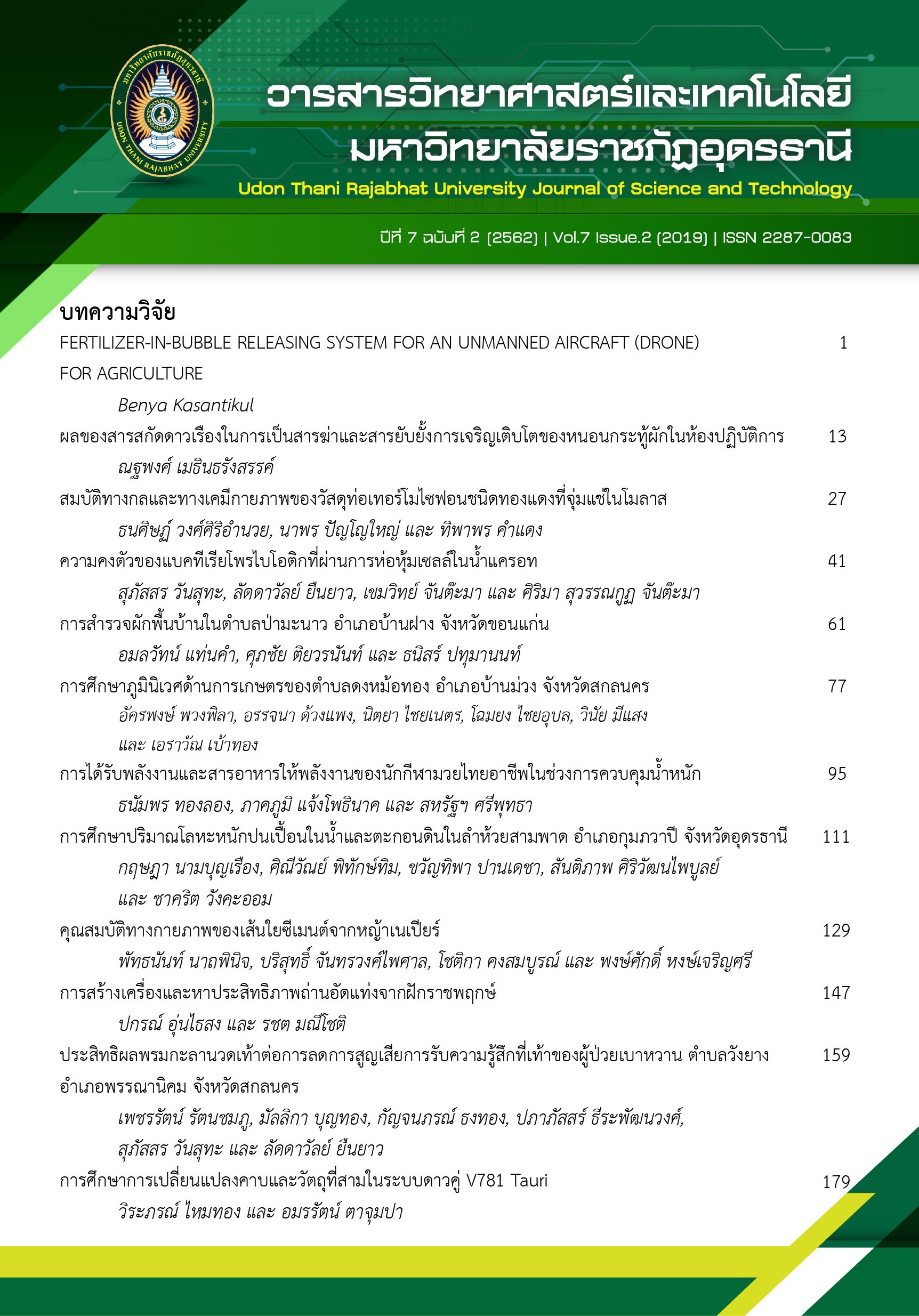MECHANICAL AND PHYSICOCHEMICAL PROPERTIES OF COPPER THERMOSYPHON MATERIAL SUBMERGED IN MOLASSES
Main Article Content
Abstract
This research aimed to determine the mechanical and physicochemical properties of copper thermosyphon materials submerged in molasses. The copper specimens with the ASTM E8M standard size were prepared and submerged in molasses with the temperature was varied from 25 to 40, 60, and 80 °C, and the submerged times of 720, 1,440, and 2,160 hours. The tensile tests were performed to estimate the mechanical properties from the stress and strain relation. The results showed that percentages of cross-sectional area reduction were directly related with submerged times. The maximum area reduction was equal to 73.77 ± 1.09% at submerged time of 2,160 hours. The area reduction of specimens submerged in molasses with different submerged durations was averagely 1.2 times higher than that without submerging in molasses. From the physicochemical properties analysis using SEM-EDS technique, it was found that copper content decreased when submerged time increased. These results could be used as the data for material selection of thermosyphon operating in molasses storage tank.
Article Details
References
Booddachan, K., Kamonpet, P., Terdtoon, P., Sutjaritakul, T., & Kobayashi, Y. (2003). Tensile strength of HDPE thermosyphon, The 7th International Heat Pipe Symposium (pp. 147-150). Jeju: Korea.
Garbatov, Y., Guedes Soares, C., Parunov, J., & Kodvanj, J. (2014). Tensile strength assessment of corroded small scale specimens. Corrosion Science, 85, 296-303.
Kamonpet, P., Booddachan, K., Terdtoon, P., Preechawuttipong, I., & Kobayashi, Y. (2003). Creep behavior of HDPE themosyphon under long term operation. Paper, The 7th International Heat Pipe Symposium (pp. 137-140). Jeju: Korea.
Martínez, C., Briones, F., Villarroel, M., & Vera, R. (2018). Effect of atmospheric corrosion on the mechanical properties of SAE 1020 structural steel. Materials (Basel, Switzerland), 11(4), 591.
Pandey, C., Mahapatra, M. M., Kumar, P., & Saini, N. (2017). Effect of normalization and tempering on microstructure and mechanical properties of V-groove and narrow-groove P91 pipe weldments. Materials Science and Engineering: A, 685, 39-49.
Pant, D., & Adholeya, A. (2007). Biological approaches for treatment of distillery wastewater: A review. Bioresource Technology, 98, 2321-2334.
Sheng, J., & Xia, J. (2017). Effect of simulated pitting corrosion on the tensile properties of steel. Construction and Building Materials, 131, 90-100.
Silalertruksa, T., Gheewala, S., & Pongpat, P. (2015). Sustainability assessment of sugarcane biorefinery and molasses ethanol production in Thailand using eco-efficiency indicator. Applied Energy, 160, 603-609.
Weon, J.-I. (2010). Effects of thermal ageing on mechanical and thermal behaviors of linear low density polyethylene pipe. Polymer Degradation and Stability, 95(1), 14-20.
Zeren, M. (2005). Effect of copper and silicon content on mechanical properties in Al–Cu–Si–Mg alloys. Journal of Materials Processing Technology, 169(2), 292-298.


